Eulogy for Lorkulup, the King of the Maasai Mara
In the boundless golden plains of the Maasai Mara, where the sun kisses the earth with reverence, we remember Lorkulup, the most iconic lion the world has ever known. His majestic mane, a flowing tapestry of amber and gold, crowned a spirit of unparalleled courage and grace.
The greatest buffalo hunter in the recorded history of lions, Lorkulup’s roars were a thunderous hymn that resonated across the savannah, captivating hearts and souls. His eyes, deep pools of wisdom, reflected the wild’s untamed spirit, and his presence inspired awe in every tourist, ranger, and local who crossed his path.
With deep sorrow, we mourn his tragic departure on January 24-25, 2025, a void left in our hearts that will never heal. Oh, noble king, your legacy is etched in eternity rest in peace, forever missed, forever honored.
Impact on Kenya’s Tourism
Lorkulup was the heartbeat of Kenya’s tourism industry, a living legend whose fame drew millions to the Maasai Mara National Reserve. His prowess as the ultimate buffalo hunter, documented in countless safari tales, turned him into a global icon, boosting the region’s economy through lodge bookings, guide services, and conservation funding.
Tourists from Brazil, the United States, and beyond traveled vast distances to witness his regal stride, injecting vital revenue into local communities. His loss, alongside his brother Olobor’s a year prior, threatens this lifeline, underscoring the fragile balance between wildlife preservation and human encroachment that sustains Kenya’s tourism crown jewel.
Circumstances of Lorkulup’s Death and the KWS Cover-Up
The official KWS report, dated around Lorkulup’s death, claims a routine patrol on January 27, 2025, discovered his carcass alongside an eland near Maji ya Fisi, close to the JW Marriott landmark (1.46475° S, 35.25447° E). It suggests Lorkulup, the “King of the Jungle,” felled the eland but sustained fatal injuries, succumbing to hyenas.
This narrative, however, is a flimsy facade riddled with holes. Independent investigations and eyewitness accounts, including those from the Black Rockers Foundation, reveal a harrowing truth: Lorkulup was run over by a Land Cruiser on January 24, 2025, and brutally speared and mutilated by two to four cattle herders, including one named Musa, who fled to Tanzania but has returned to Maasai Mara.
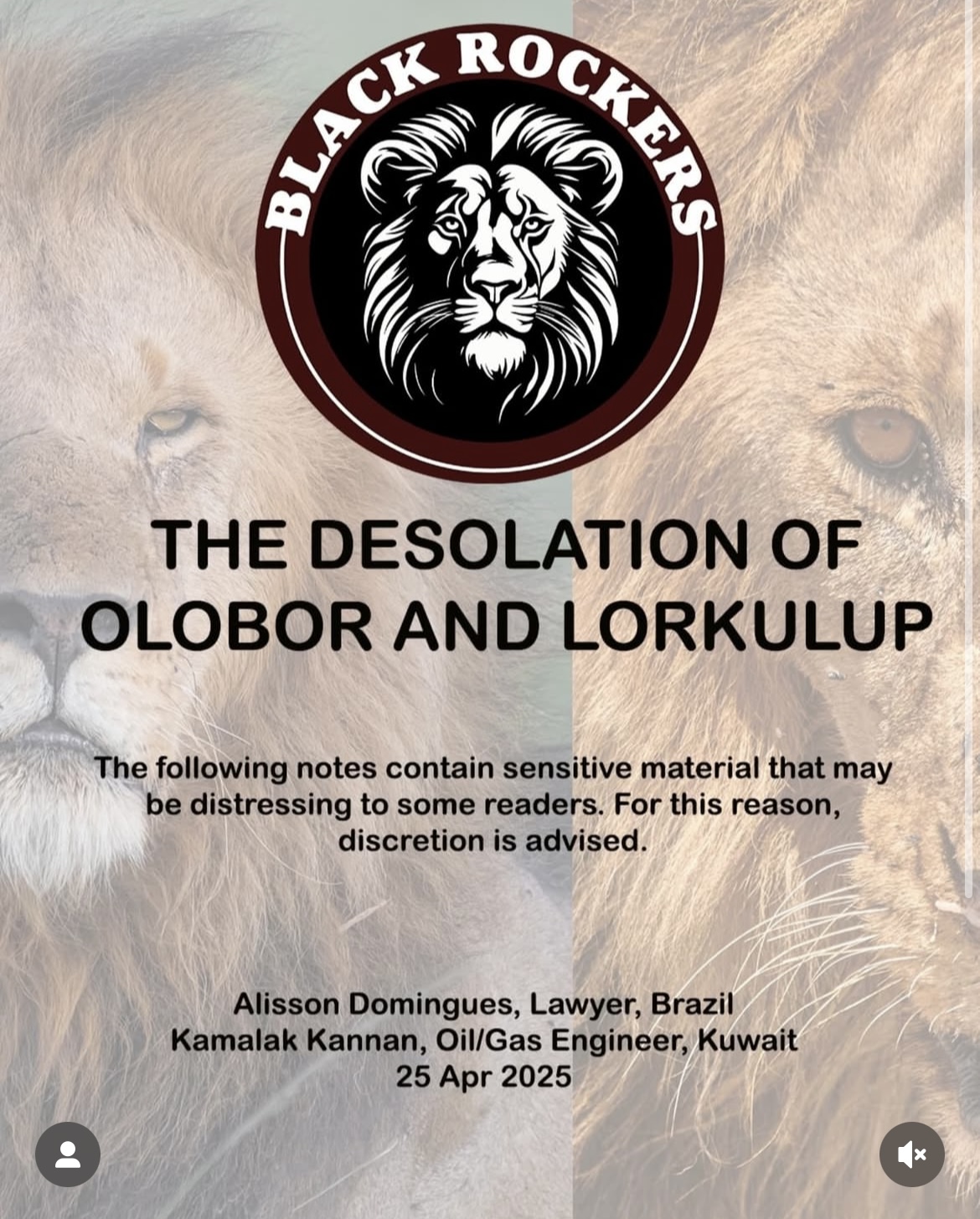
Preamble on the planned elimination of two of the most iconic lions in the Maasai Mara by Alisson Domingues, Lawyer, Brazil Kamalak Kannan, Oil/Gas Engineer, Kuwait
25 Apr 2025
His head, found on January 27, 2025, bore machete and spear wounds, contradicting the eland-hyena story. The infamous hyena photo with a lion’s leg, linked to Lorkulup, further exposes the cover-up, as hyenas devoured his remains post-murder.
The KWS’s “delicate balance of nature” tale is a deliberate distortion, designed to shield the influential Talek guide a member of a powerful family with extensive cattle holdings and the complicit Narok government.
Corruption and Illegal Grazing in Maasai Mara
Beneath Lorkulup’s death lies a cesspool of corruption and illegal grazing that threatens the Mara’s soul.
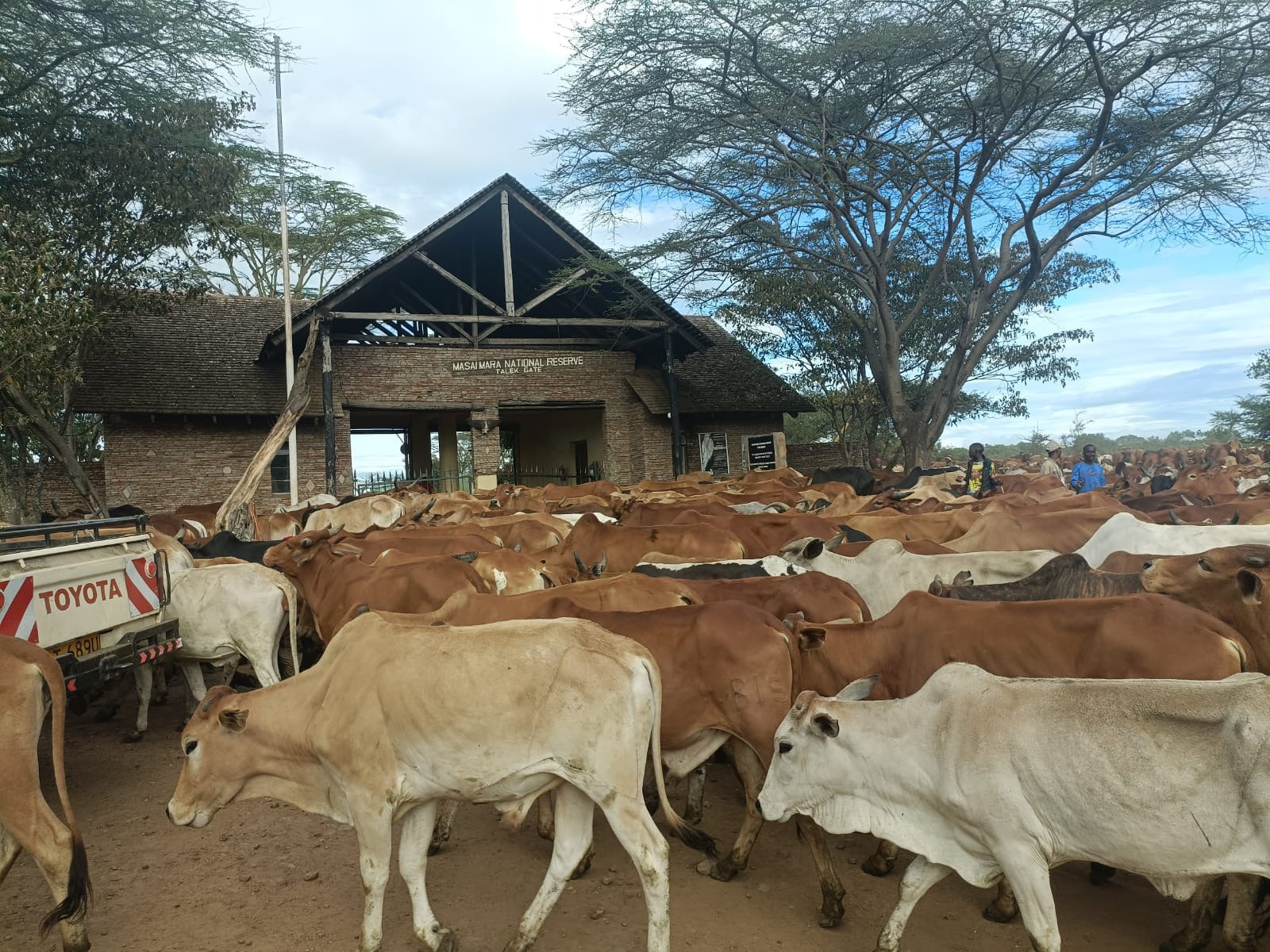
Illegal grazing in the Maasai Mara continues to pose an existential threat to wildlife
Ranchers in the Talek region, exploiting the Reserve’s northern border, illegally herd cattle into its protected zones, a practice documented by the Black Rockers’ maps showing cattle tracks within Maji ya Fisi.
This bait lures lions like Lorkulup and Olobor killed on January 24, 2024 into attacks, prompting herders (wachungajis) to retaliate with lethal force at the behest of these farmers.
The Black Rockers’ notes detail Olobor’s ambush near a stream and Lorkulup’s run-over by a vehicle, both shielded by a “law of silence” imposed by Narok’s governor.
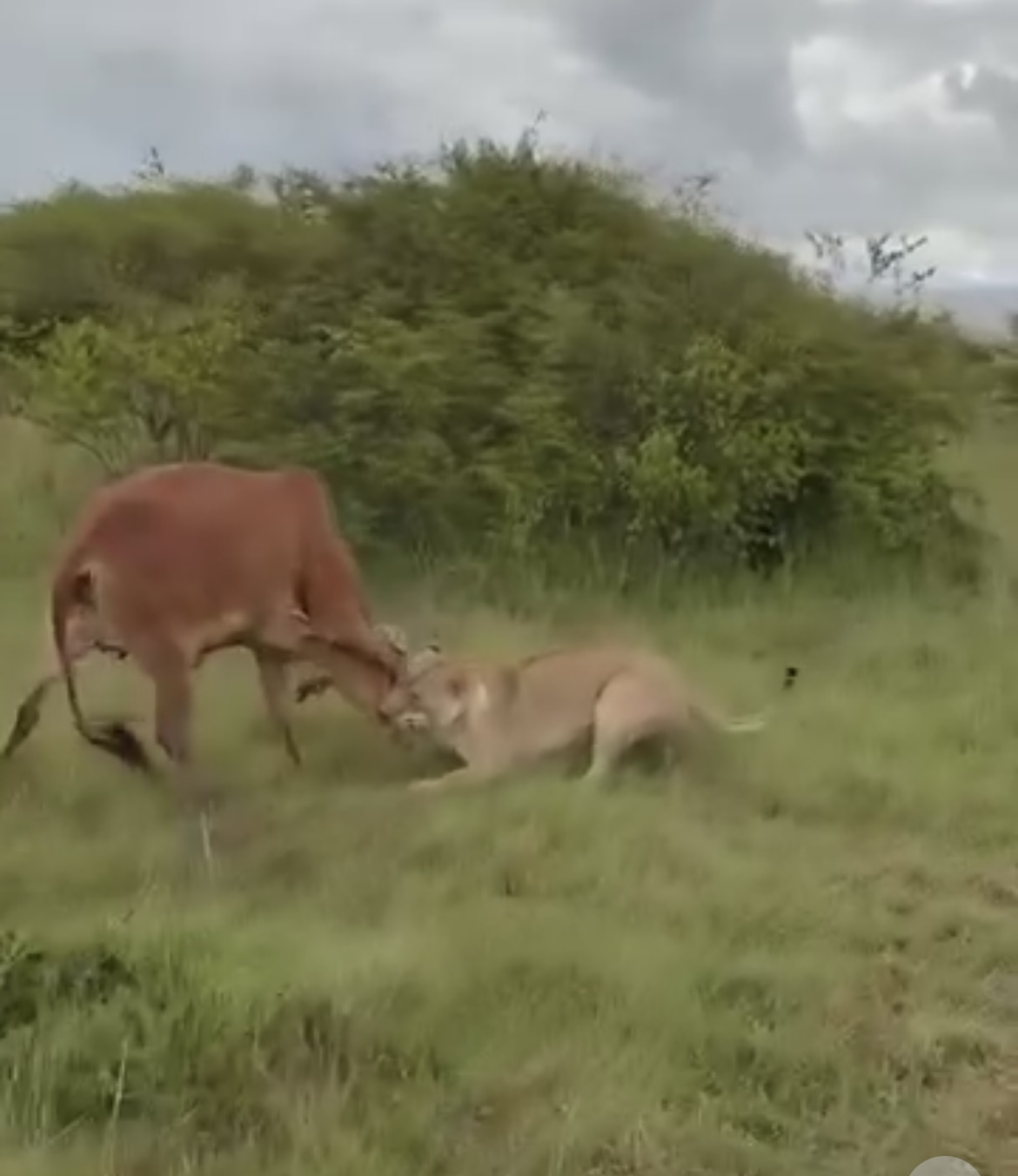
How lions are lured to their death using cattle by criminal herders connected to powerful Talek families
Recent web reports, including statements from former Attorney General Justin Muturi, reveal the governor’s brother sought to acquire Olkiombo land within the Reserve, with President William Ruto now appealing the judgment after realizing the land’s status.
This land grab, coupled with the government’s failure to compensate herders or enforce the 2023-2032 Management Plan, Wildlife Act, and Kenya’s Constitution, fosters a culture of impunity. The governor’s inaction, tied to personal gain, mirrors the negligence that allowed Lorkulup’s and Olobor’s murders.
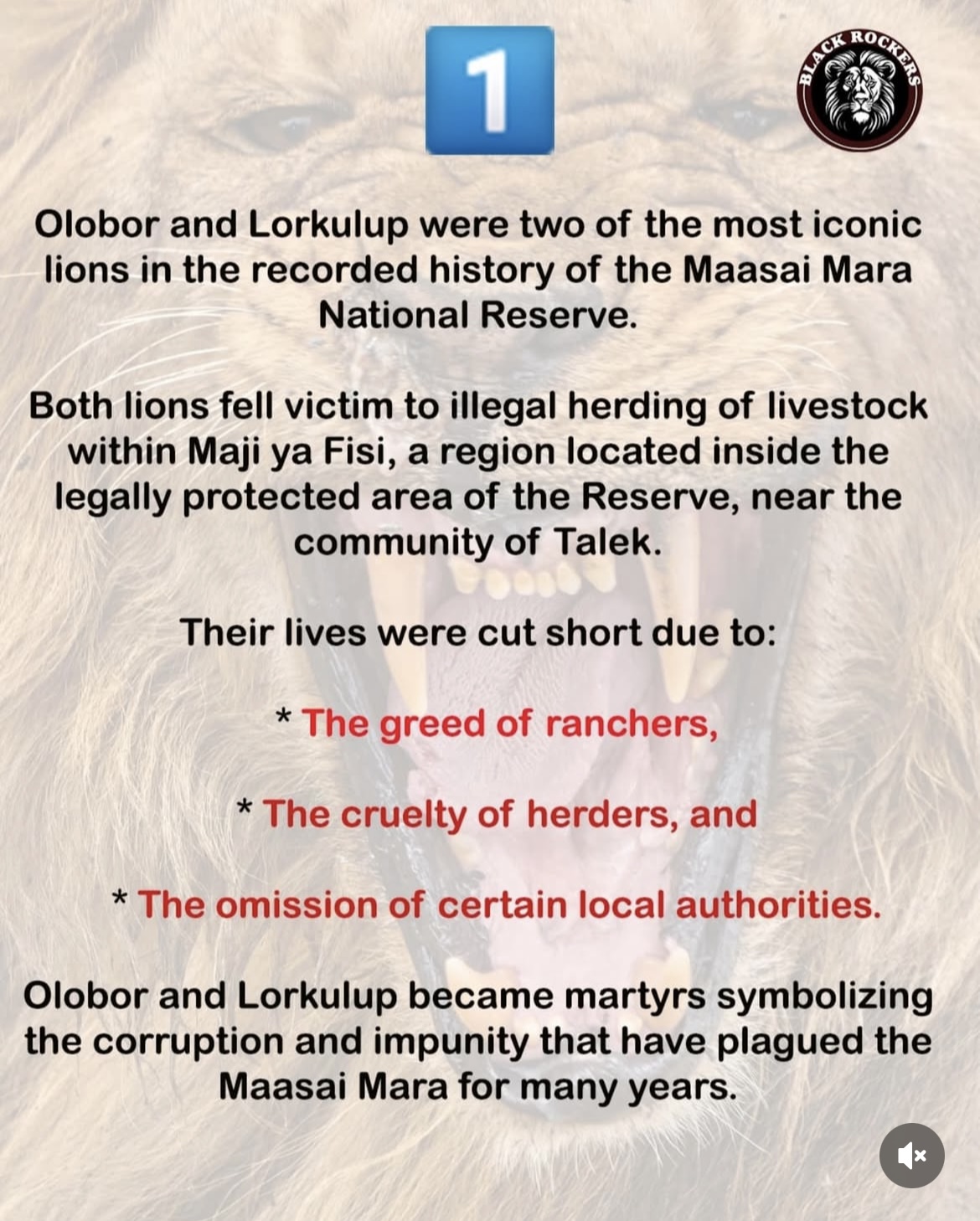
Adding to this web of corruption, President Ruto’s own history of land crimes casts a shadow over the Mara’s plight.
In 2013, the High Court ordered Ruto to vacate a 100-acre farm in Turbo, Uasin Gishu County, and pay Sh5 million to Adrian Muteshi, a displaced farmer, after ruling that Ruto fraudulently acquired the land during post-election violence in 2007-08. Ruto’s appeal was withdrawn in 2017, but his name resurfaced in 2020 with Muteshi’s death, highlighting unresolved land justice issues.
In 2015, Ruto’s North Mogor Holdings acquired the 900-acre Intona Ranch near the Maasai Mara, originally owned by former Vice-President Joseph Murumbi, after Murumbi defaulted on an AFC loan in 1985.
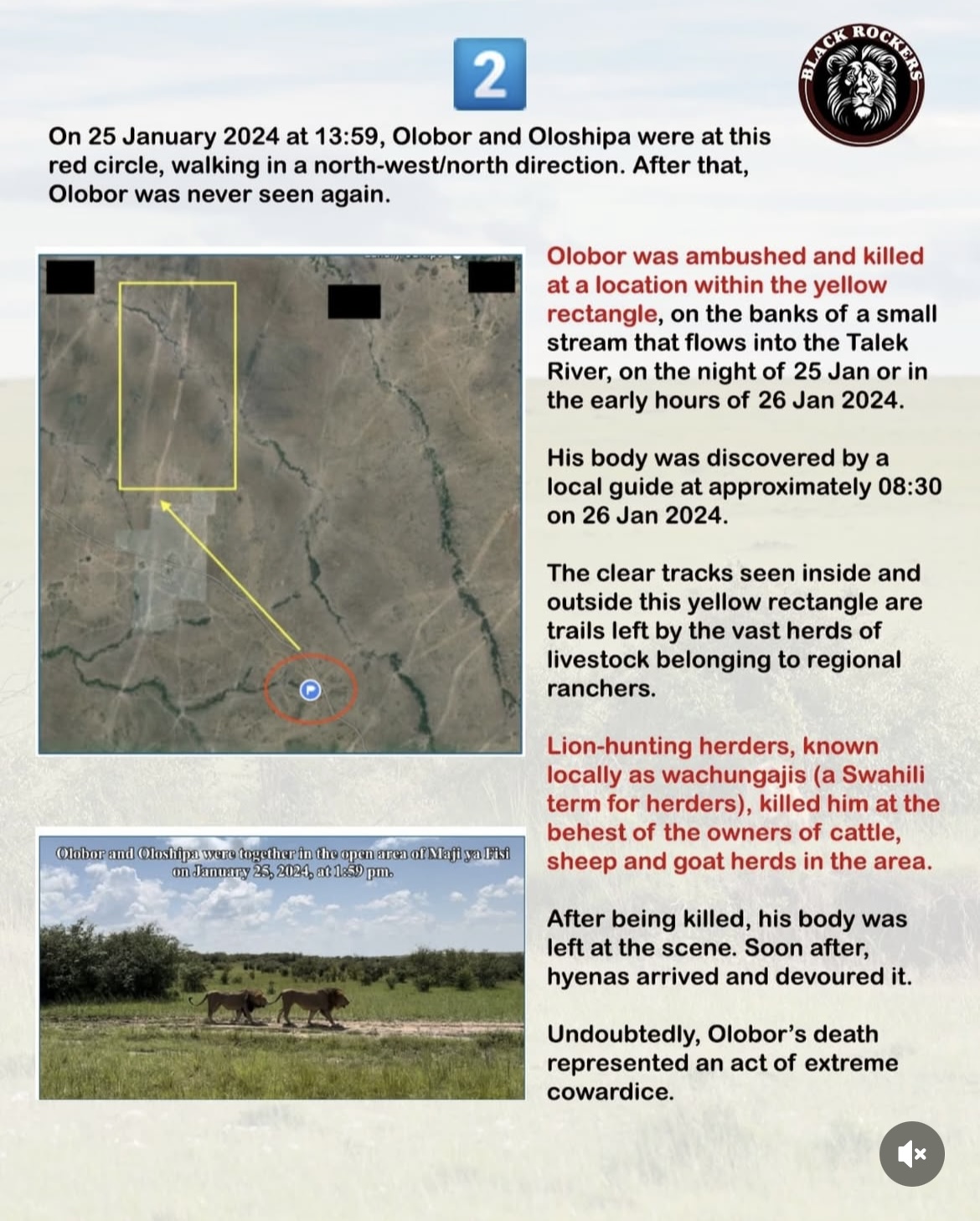
The Murumbi house, a cultural landmark adjacent to this land, was part of this acquisition, raising concerns about the erosion of heritage for personal gain. The Trusted Society of Human Rights continues to demand investigations into this fraud.
The feud with the Kipsigis community in Mai Mahiu further exemplifies Ruto’s land crimes.
In 2025, protests erupted over Ruto’s government’s plan to acquire land for affordable housing, including a 5,800-acre tract owned by the late Isaiah Cheluget’s family in Narok South. Initially, squatters and community members resisted, leading to violent clashes where Ruto’s police shot dead protestors.
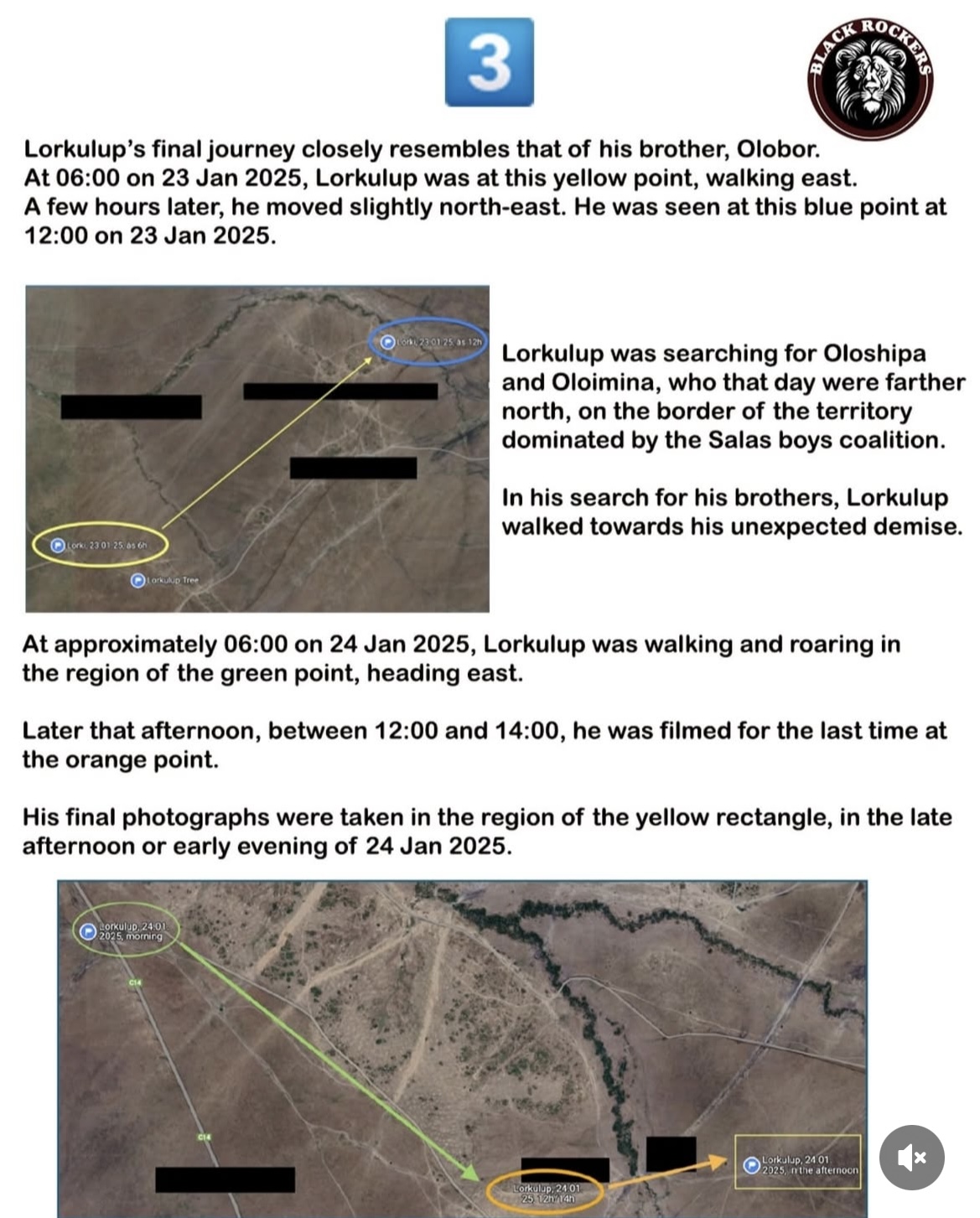
The Cheluget family later agreed to sell, but a faction led by Moses Kipkirui Cheluget challenged the deal, alleging unauthorized negotiations.
This violence, part of over 100 deaths in nationwide protests against Ruto’s policies, including land grabs, reflects Ruto’s authoritarian approach to land disputes, undermining conservation and justice.
The Fall of a King: The Untold Story of Lorkulup’s Murder
In the heart of the Maasai Mara National Reserve, where the wild reigns supreme, Lorkulup, the world’s most iconic lion, met a savage end on January 24-25, 2025. His death, near Maji ya Fisi (1.46475° S, 35.25447° E) close to the JW Marriott, is not a natural tragedy but a calculated act of human greed and corruption.
This greatest buffalo hunter, whose roars once drew global tourists, deserves a truth the Kenya Wildlife Service (KWS) seeks to bury.
The KWS report paints a poetic yet false picture: Lorkulup battled an eland, sustained injuries, and was finished by hyenas, a scene discovered on January 27, 2025.
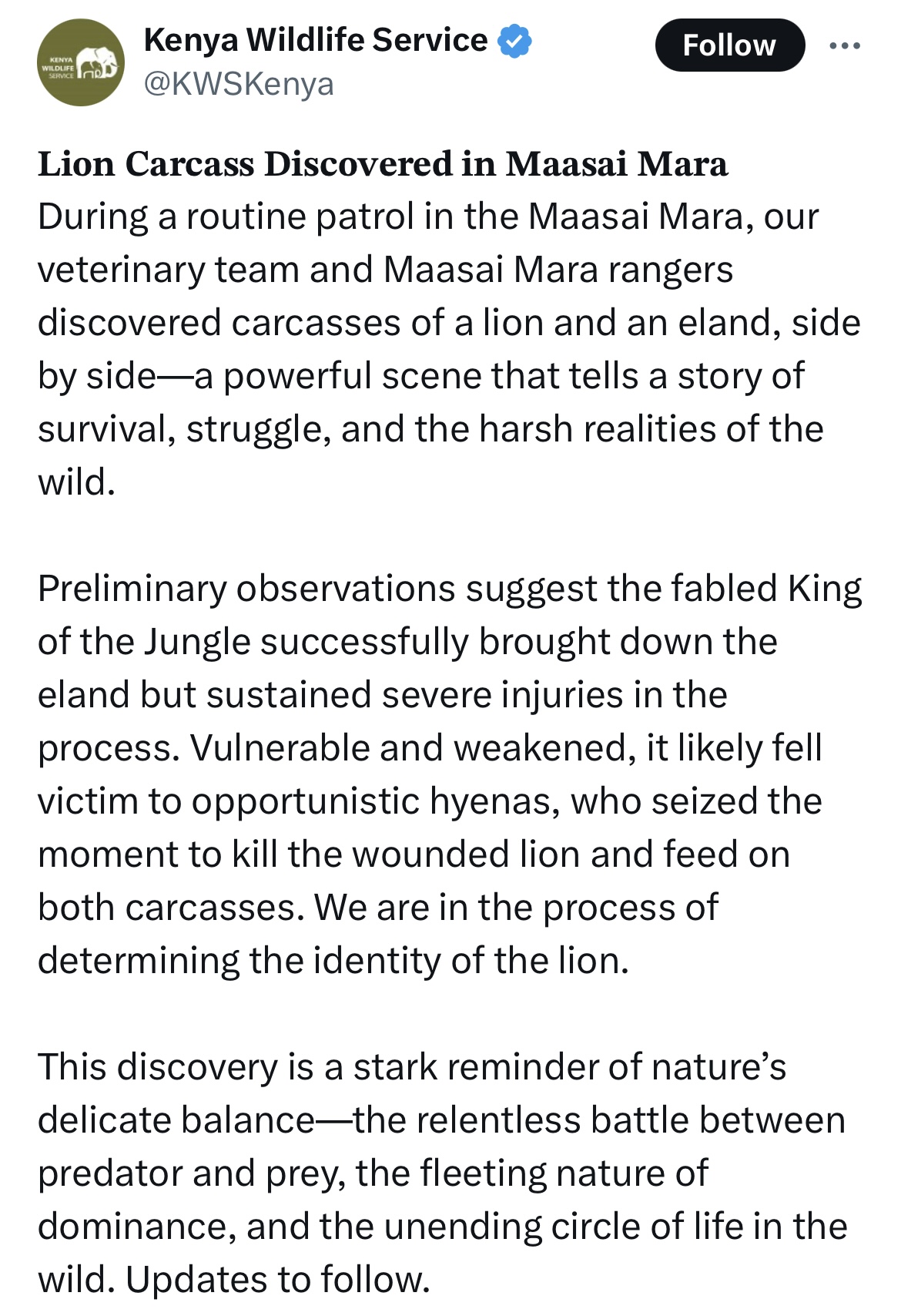
Yet, the Black Rockers Foundation’s meticulous documentation maps, timelines, and photos tells a different story. Lorkulup was run over by a Land Cruiser, speared by herders including Musa (who fled to Tanzania and returned), and mutilated, his head found days later with clear human-inflicted wounds.
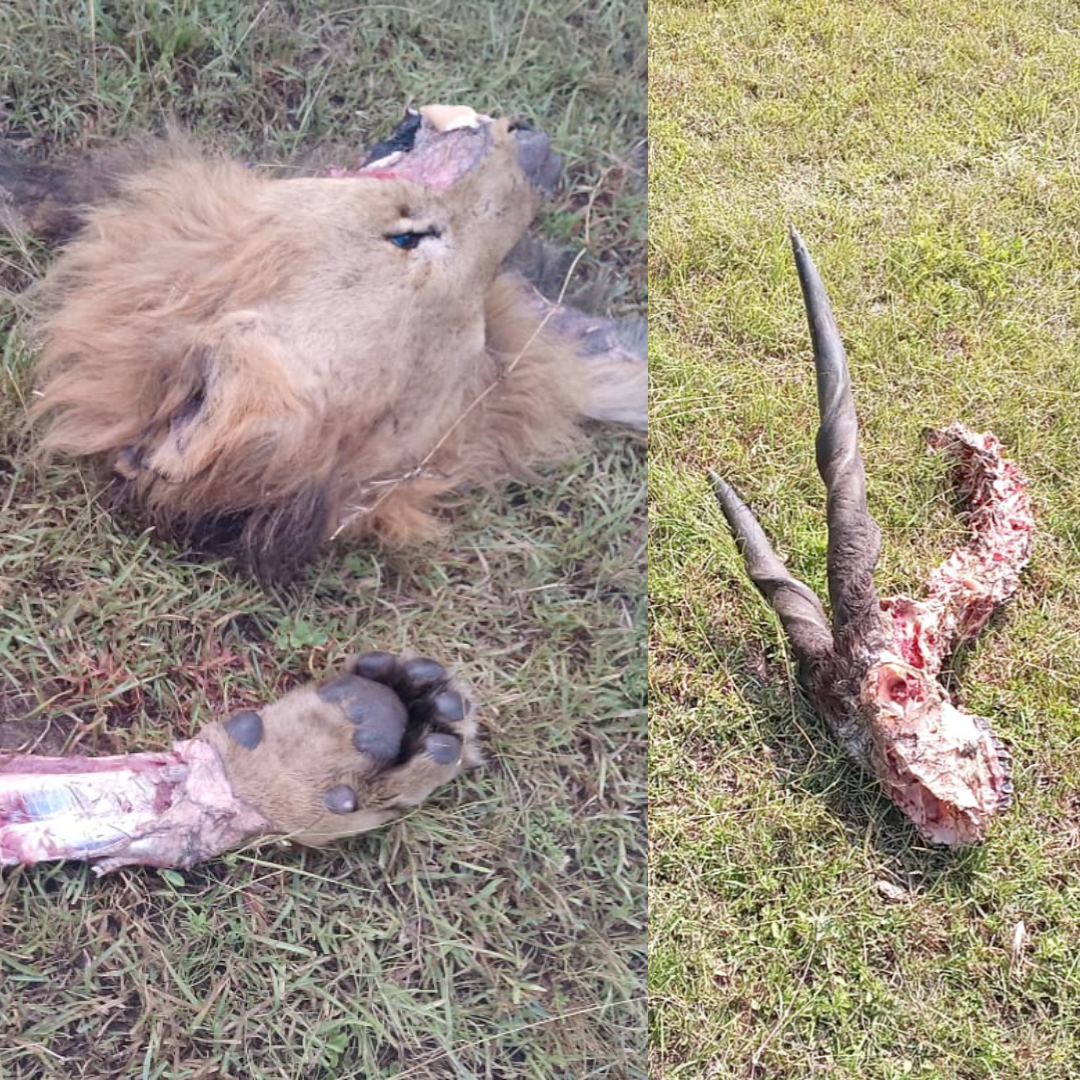
The KWS misled the public into believing that famed lion Lorkulup was killed by an eland, a lion known for hunting down buffaloes
The hyena photo with his leg, the eland’s death, and the bodies taken for investigation on January 27, 2025, point to a cover-up.
A Talek guide, from an influential cattle-owning family, orchestrated the attack, exploiting illegal grazing to lure Lorkulup into a trap. This contradicts the KWS’s eland narrative a lion of his stature would never fall to prey alone.
The rot runs deeper. Illegal grazing by Talek ranchers, tracked within the Reserve’s protected areas, sets a deadly cycle: cattle attract predators, herders kill lions, and Narok’s government enforces silence.
Olobor, Lorkulup’s brother, met the same fate on January 24, 2024, ambushed near a stream, his carcass devoured by hyenas amid cattle tracks.
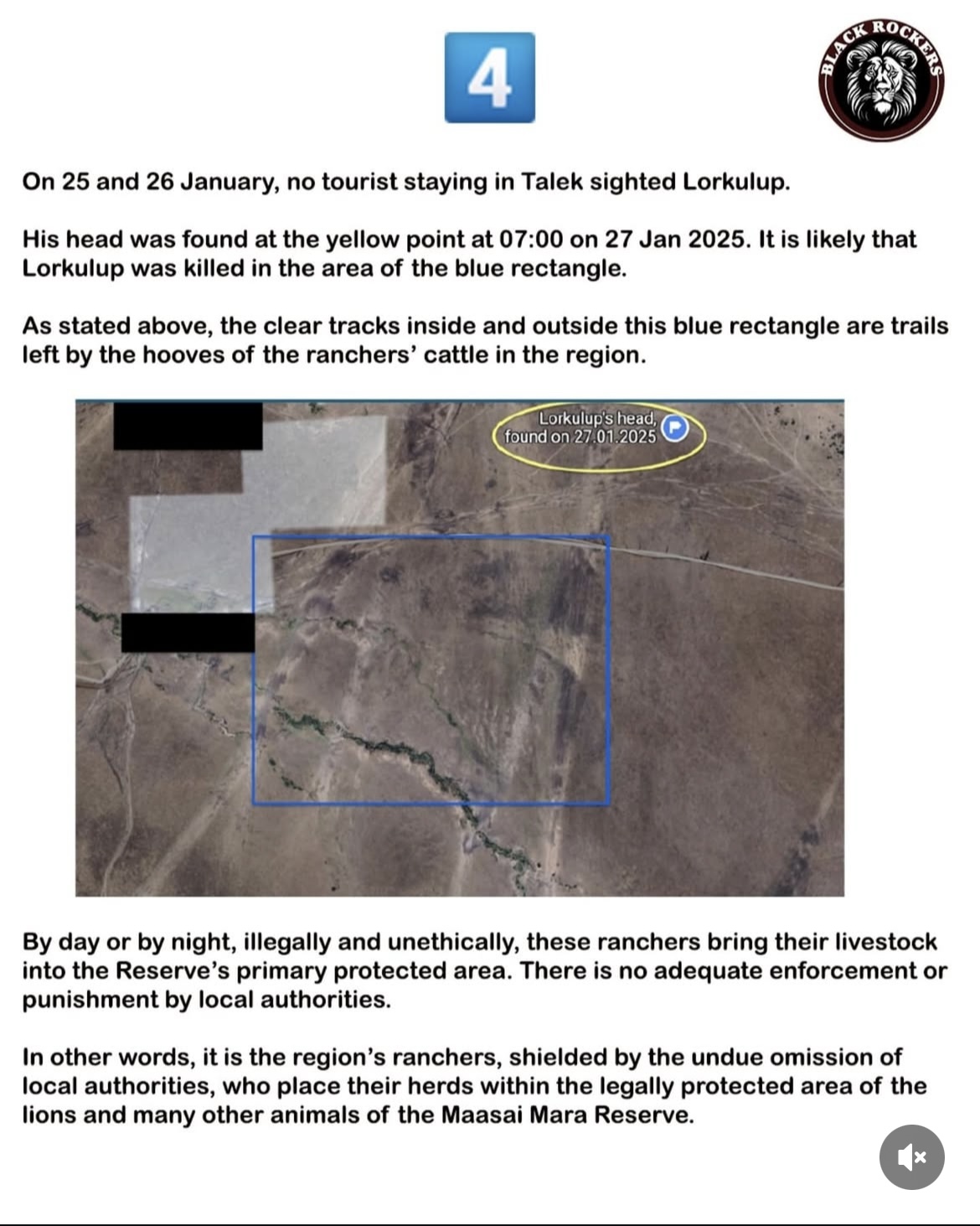
The governor’s brother’s bid to seize Olkiombo land, exposed by Justin Muturi, ties this corruption to land grabs, with President Ruto now appealing the claim.
The 2023-2032 Management Plan, Wildlife Act, and Constitution are violated, yet no punishment follows. This systemic failure, fueled by greed and negligence, has claimed two kings.
President Ruto’s own land crimes amplify this crisis. In 2013, the High Court ruled Ruto fraudulently acquired a 100-acre farm in Turbo from Adrian Muteshi during the 2007-08 post-election violence, ordering him to vacate and pay Sh5 million compensation he paid only after withdrawing an appeal in 2017.
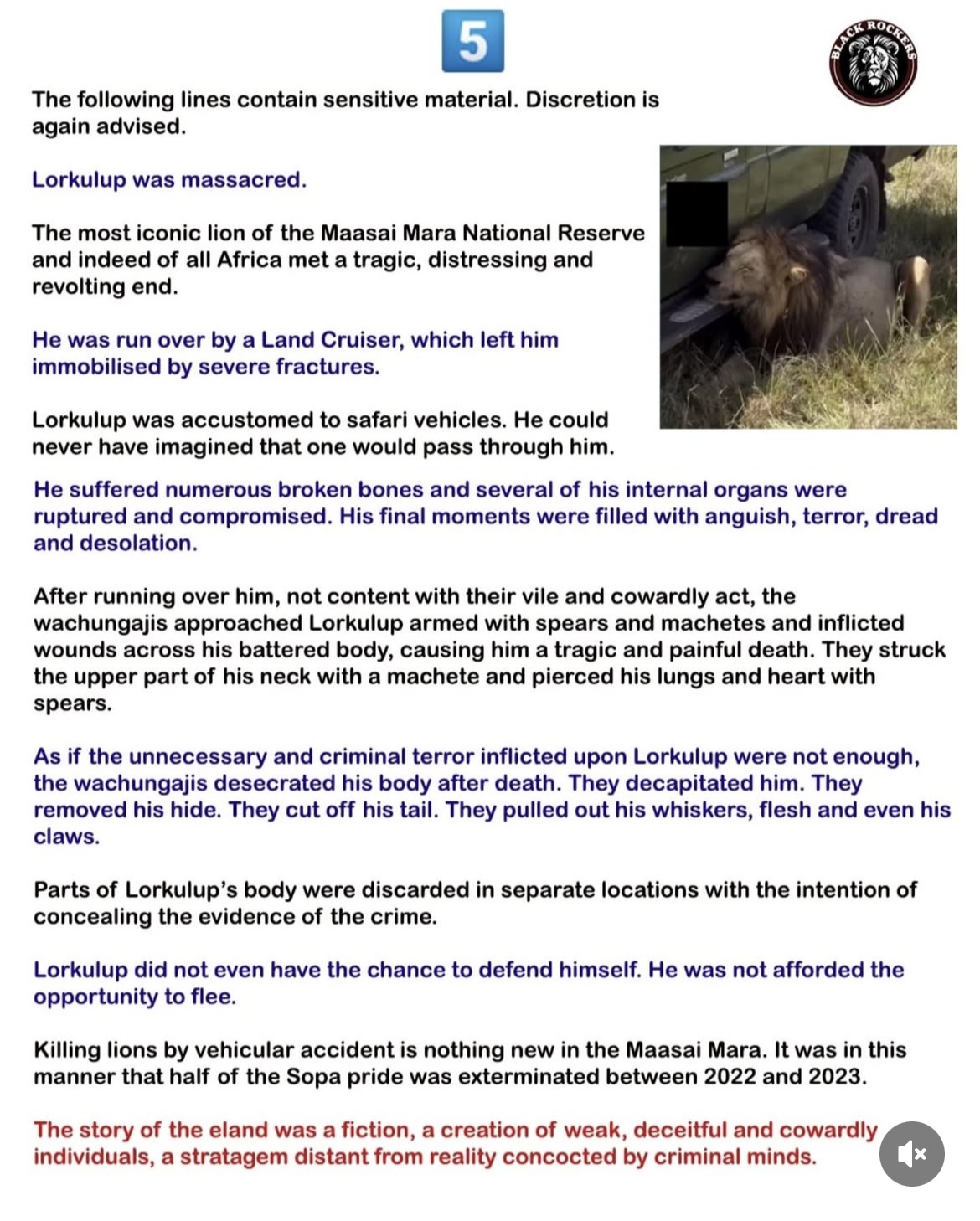
In 2015, Ruto’s North Mogor Holdings acquired the 900-acre Intona Ranch near the Mara, originally Joseph Murumbi’s, after a disputed AFC loan default, including the culturally significant Murumbi house.
The Trusted Society of Human Rights demands investigations into this fraud. In 2025, Ruto’s housing project sparked a deadly feud with the Kipsigis community in Mai Mahiu.
His regime’s plan to buy 5,800 acres from the Cheluget family for squatters led to protests where Ruto’s police shot dead demonstrators, amid claims of unauthorized negotiations by Moses Kipkirui Cheluget.
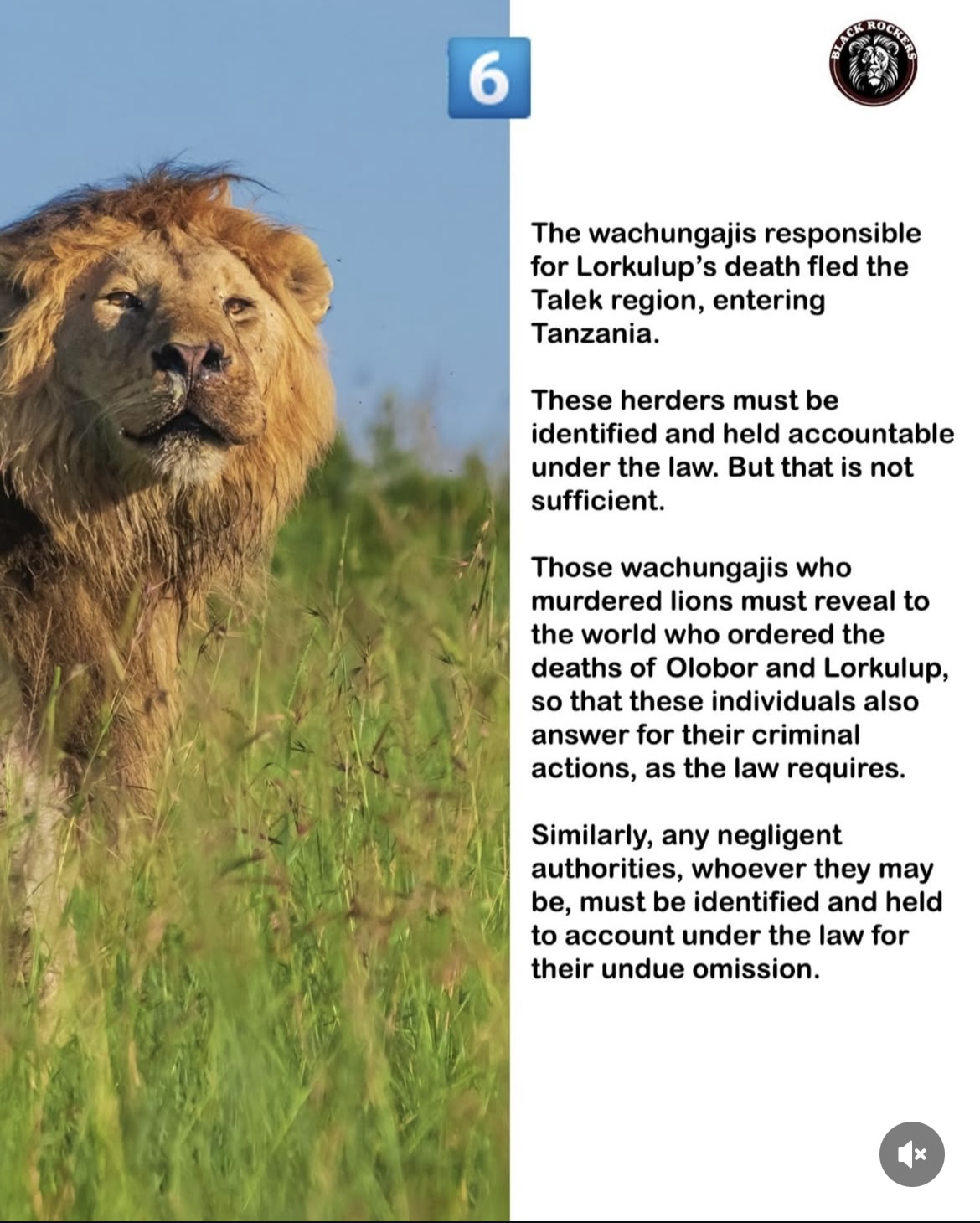
This violence, part of over 100 deaths in nationwide protests, reflects Ruto’s authoritarian approach to land disputes, undermining conservation and justice.
Justice must prevail. The wachungajis, the guide, the ranchers who ordered these deaths, and the negligent authorities including the governor and Ruto’s administration must be held accountable.
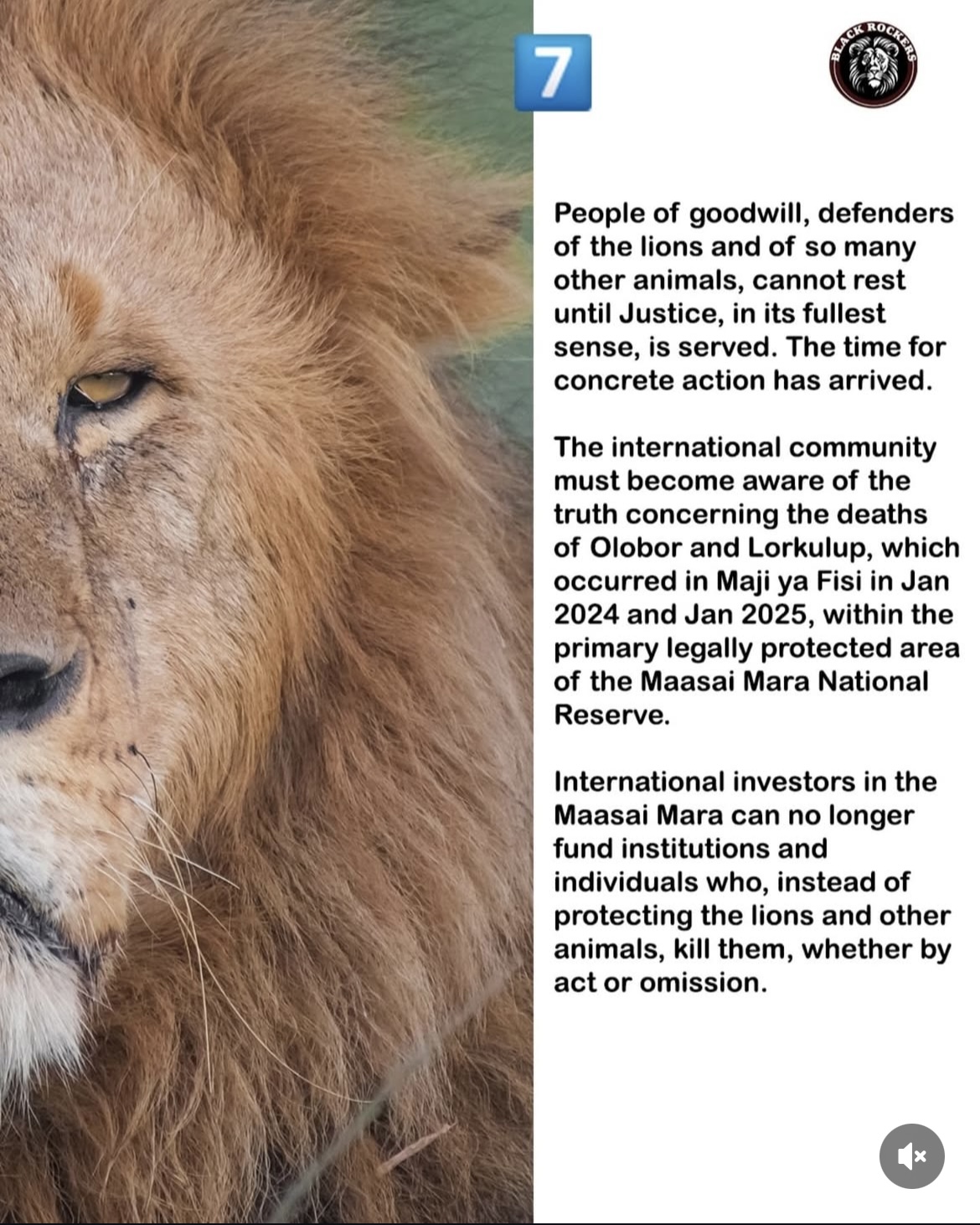
The international community, from Brazil to beyond, must pressure investors to shun those destroying the Mara.
Lorkulup’s legacy demands action, not silence. His story, honored in memory, calls for a world awakened to the truth.
The time for concrete action is now justice for Lorkulup, Olobor, and the fallen kings of the Mara.
#JusticeForLorkulup #MaasaiMaraTruth
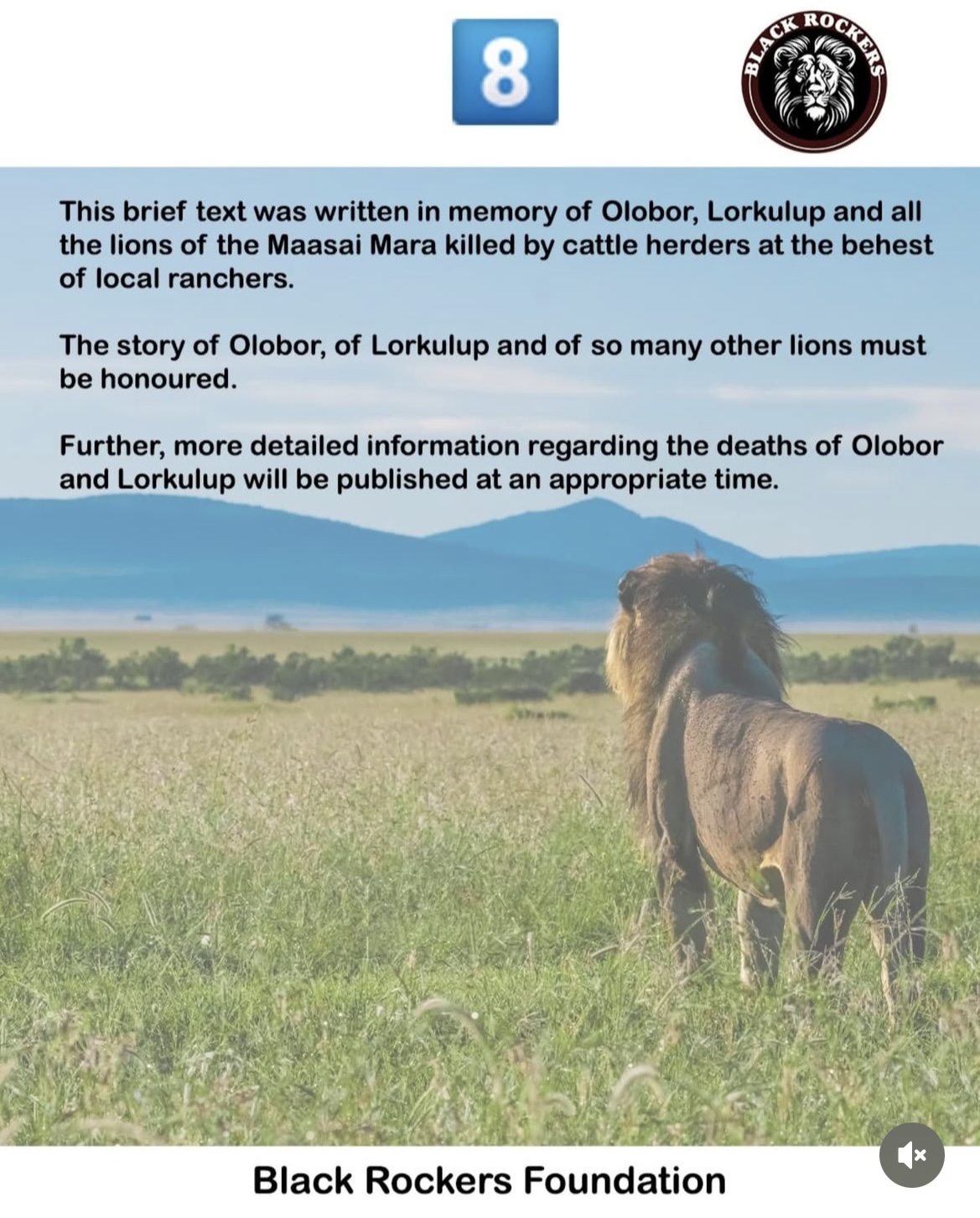
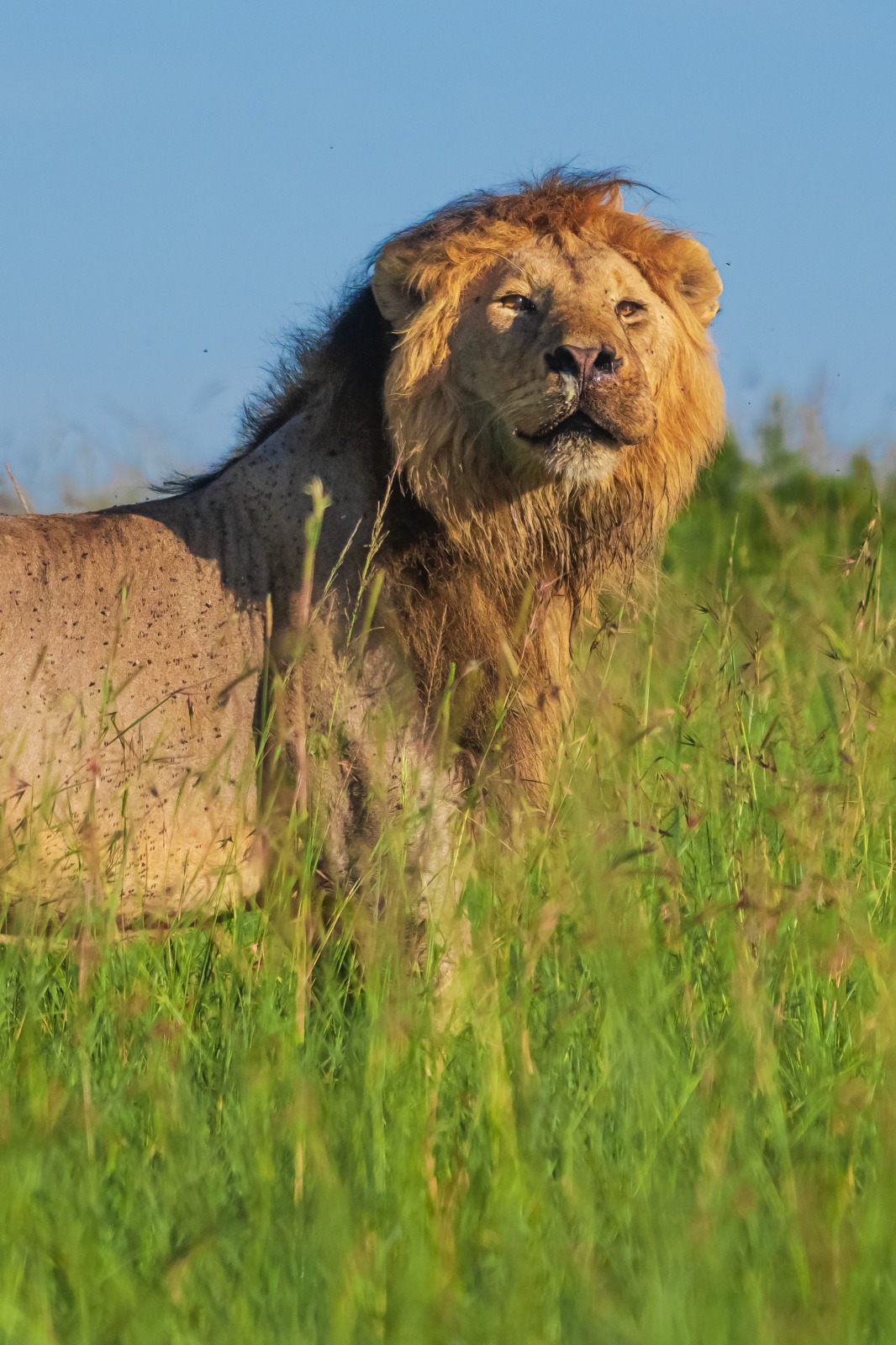

1 comment
Thank you for standing up for our beloved lions! I’m still so broken hearted 💔 and Angry!! 😡🔥😡🔥😡🔥😡🔥😡🔥😡🔥😡🔥😡😭